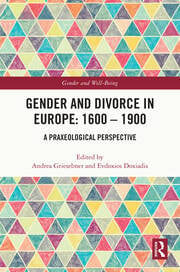
Getting divorced and remarried are now common practices in European societies, even if the rules differ from one country to the next. Civil marriage law still echoes religious marriage law, which for centuries determined which persons could enter into marriage with each other and how validly contracted marriages could be ended.#history #europe #humanrights #carework #maleprivilege #gender #divorce
Religions and denominations also had different regulations regarding whether a divorce only ended marital obligations or also permitted remarriage.

Well that sounds like a solvable problemYeah.
Magnetism or spring loaded?
Auf YouTube findest du die angesagtesten Videos und Tracks. Außerdem kannst du eigene Inhalte hochladen und mit Freunden oder gleich der ganzen Welt teilen.youtu.be
In January 1922, Leonard Thompson, a 14-year-old boy dying from diabetes in a Toronto hospital, became the first person to receive an injection of insulin. Within 24 hours, Leonard’s dangerously high blood glucose levels dropped to near-normal levels.
The news about insulin spread around the world like wildfire. In 1923, Banting and Macleod received the Nobel Prize in Medicine, which they shared with Best and Collip. Thank you, diabetes researchers!
Soon after, the medical firm Eli Lilly started large-scale production of insulin. It wasn’t long before there was enough insulin to supply the entire North American continent. In the decades to follow, manufacturers developed a variety of slower-acting insulins, the first introduced by Novo Nordisk Pharmaceuticals, Inc., in 1936.
Insulin from cattle and pigs was used for many years to treat diabetes and saved millions of lives, but it wasn’t perfect, as it caused allergic reactions in many patients. The first genetically engineered, synthetic “human” insulin was produced in 1978 using E. coli bacteria to produce the insulin. Eli Lilly went on in 1982 to sell the first commercially available biosynthetic human insulin under the brand name Humulin.
